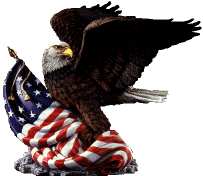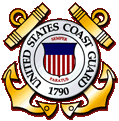



![]()




"A rum runner afire." The crew of the rum-runner LINWOOD set fire to their vessel after being pursued by a patrol boat in order to destroy the evidence." Photo No. 5-4-23N; 1923; photographer unknown.
Much of the ‘fuel’ that made the roar in the "Roaring 20s" was alcohol--beer, wine, bathtub gin, "hooch", "fresh off the boat" and all of it manufactured, imported, transported, sold, and consumed illegally. Prohibition, called the "noble experiment" by President Herbert Hoover became the law of the land on January 16, 1920, one year after the 36th state ratified the 18th Amendment to the Constitution. Enforcement of the law fell to the Department of the Treasury and the Coast Guard was charged with interdicting the flow of "Demon Rum" before it reached American shores.
At first blush the task ahead appeared an easy one. Even today, historians exemplify the prohibition movement as a true grassroots campaign, originating in the mid-19th century and fostered by citizens groups such as the Women’s Christian Temperance Union and the Anti-Saloon League. The local and state power of the ‘dry’ forces was such that thirty-three states were officially ‘dry’ even before the Constitutional amendment was made law. The state ratification process reached the requisite three-fourths of the states in just over a year, an impressively expeditious performance, even though some complained that it was done while the ‘doughboys’ were still away settling Europe’s problems.
The spirit of social reform seemed to have triumphed. Indeed, the opposition was limited and inept. The ‘wets’ included numerous prominent brewers who had banded together during the war to "preserve German culture" and had pursued other covert activities. When these were brought to light by federal authorities, the anti-prohibition forces were hung with the stigma of disloyalty. By that time the dry steamroller had peaked and the game was up.
The first months of Prohibition were deceitfully quiet along America’s coasts, no doubt causing further optimism among those who expected the law to be the panacea for America’s alcohol problem. Signs of the coming onslaught were not difficult to discern, however. Seizures and raids inland had coincided with the laws inception and received the expected publicity. How serious both enforcement and evasion would be was not yet clear. The earliest official Coast Guard reference to the growing illicit trade was in the annual report for fiscal 1921. Dated June of that year, the Florida coast patrol was reported to be "particularly vigilant" in this activity, having made "hundreds of trips" in support of Federal prohibition authorities and seized several vessels.
Unlike land-locked bootleggers who needed nothing more than an automobile trunk, the seafaring counterpart had a substantial logistics problem: his sources and his thirsty consumers, a great number of whom inhabited the teeming port cities, were separated by blue water.
Solving this dilemma is credited to one Captain William S. McCoy. This gentleman, though supposedly a non-drinker, was intelligent enough to avoid the high visibility inherent in actually docking his ship and happy cargo. He hove to immediately outside of the magic 3-mile limit, immune from any U.S. authorities, and waited for the well-informed to come to him. The idea was simple, and indeed had been practiced by penny-pinching smuggler-merchants at least as long as there had been customs duties. They would unload the high-tariff items surreptitiously, usually onto night-hidden small boats, prior to submitting to inspection at the port-of-entry.
McCoy showed up in May, 1921 in his auxiliary schooner Tomoka, just off Long Island, and became the popularly accepted "founder" of Rum Row. U.S. registered vessels were subject to seizure outside American waters, but McCoy had circumvented this by the simple expedient of British registry.
Whether McCoy’s "founding" of "Rum Row" was real or popular fiction is irrelevant. Rum Rows were a fact, and an embarrassing one for the "drys" until international law dispersed the supply "mother" ships beyond the newly proclaimed 12-mile mark in the mid-1920s. In the interim, the Coast Guard harried the shore-running contact boats and stood ready to pounce on suppliers who strayed shoreward.
It was no doubt fortunate that Prohibition evasion had been slow to get under way. When things got serious it became woefully apparent that the service was at least numerically far short of the challenge inherent in enforcing what proved to be an unpopular law. The geographical dimensions were daunting in themselves. Including the Great Lakes, the American coast exceeded 6,000 miles with no shortage of bays, coves, inlets, estuaries and other inviting shelters for lawbreakers. Indeed, the blockade of the Civil War had shown the difficulties met in such an operation and those vessels had only Southern shores with which to deal.
It also can be said that the American coast harbored the greatest consumers of liquor. The political opposition to Prohibition was centered in the large cities with ethnic populations. They were particularly incensed that generally moral considerations had been attached to their cultural use of such beverages. In any case, the large drinking populations just happened to reside in the great port cities, in particular, Boston and New York.
To deal the proper penalties to the lawbreakers, the U.S. Coast Guard in 1920 continued as if in pre-Prohibition years, Congress had not seen fit to increase their appropriations to meet exigencies to come.

75 Foot Patrol Boat.
In ships, the service had vessels of three classifications: cruising cutters, inshore patrol and harbor cutters. There were twenty-nine in the first category: vessels capable of extensive seagoing operations. This variety included some, such as Acushnet, which were no more than 10-knot ocean tugs. Four were engaged in Northern Pacific waters at least part of each year: the famous Bear, Algonquin, Bothwell, and Unalga. Three were assigned away from the threatened coasts, Puerto Rico, Panama Canal, and Evansville, Indiana plus one in the territory of Hawaii.
The average cruising cutter was built for endurance rather than speed and few exceeded 12 knots. The exceptions to this were the five former Navy Eagle boats that could make 18 knots, though their sea-going characteristics left much to be desired.
The inshore patrol vessels numbered twenty-six, as of January 1, 1920. Twenty-one of which were former USN subchasers, light draft, World War I veterans designed for 18 knots. These ships had recently been added to the service and the Coast Guard budget and personnel levels did not permit their effective use. Nine were turned over to the Prohibition Bureau as a result.
A few harbor cutters were 20-knot plus craft, however, the majority of these were simply tugboats utilized for routine harbor duties and exceptionally unfit for coping with zealous lawbreakers.
![]() Next Page with a LOT more pictures to
come!
Next Page with a LOT more pictures to
come!
Copyright © 2004 United States Coast Guard Lightship Sailors Association
INC. All rights reserved.
Copyrights also protected by the Digital Millennium Copyright Act of
1998
Revised: 10/23/06.